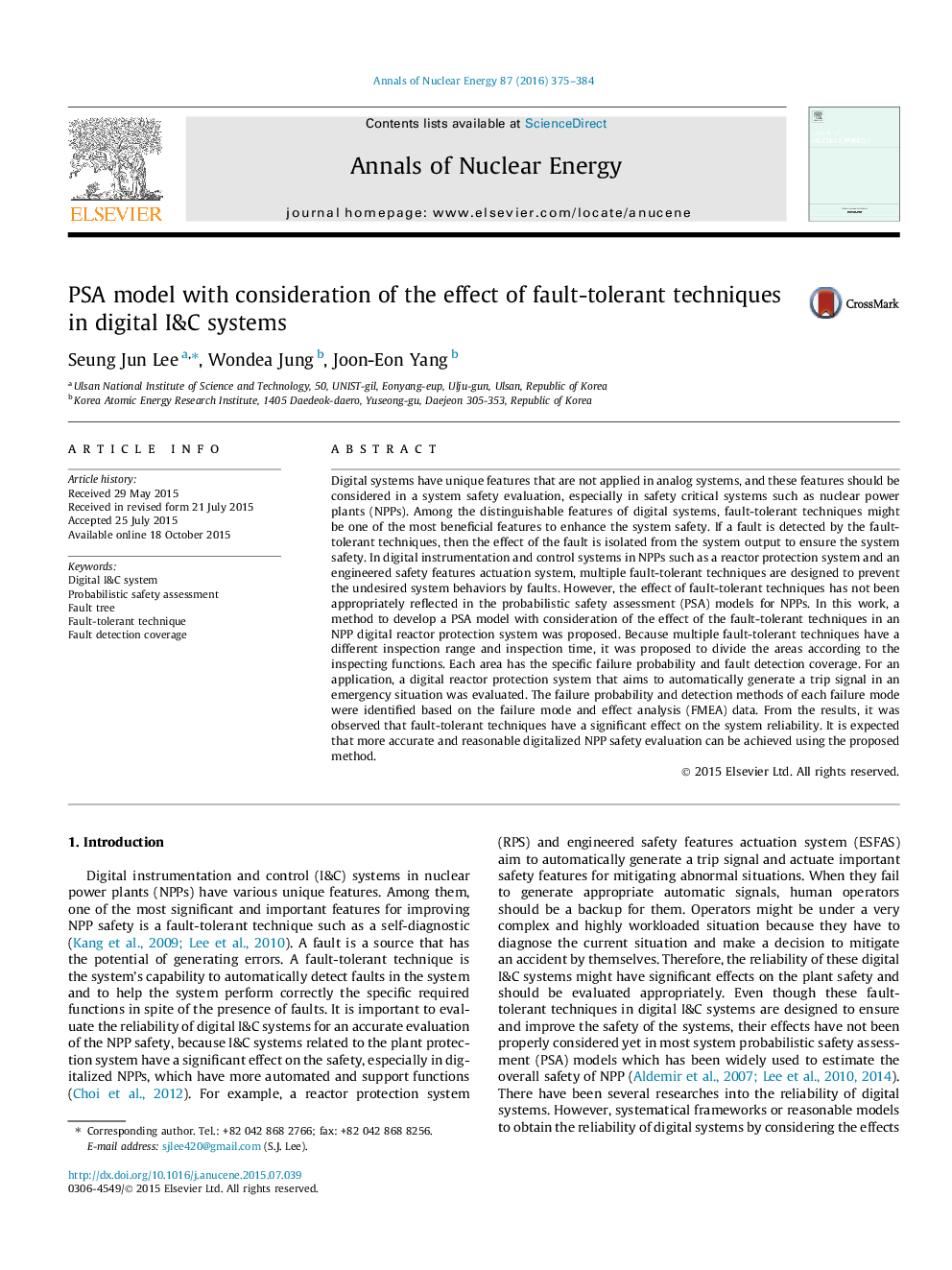| Article ID | Journal | Published Year | Pages | File Type |
|---|---|---|---|---|
| 8068064 | Annals of Nuclear Energy | 2016 | 10 Pages |
Abstract
Digital systems have unique features that are not applied in analog systems, and these features should be considered in a system safety evaluation, especially in safety critical systems such as nuclear power plants (NPPs). Among the distinguishable features of digital systems, fault-tolerant techniques might be one of the most beneficial features to enhance the system safety. If a fault is detected by the fault-tolerant techniques, then the effect of the fault is isolated from the system output to ensure the system safety. In digital instrumentation and control systems in NPPs such as a reactor protection system and an engineered safety features actuation system, multiple fault-tolerant techniques are designed to prevent the undesired system behaviors by faults. However, the effect of fault-tolerant techniques has not been appropriately reflected in the probabilistic safety assessment (PSA) models for NPPs. In this work, a method to develop a PSA model with consideration of the effect of the fault-tolerant techniques in an NPP digital reactor protection system was proposed. Because multiple fault-tolerant techniques have a different inspection range and inspection time, it was proposed to divide the areas according to the inspecting functions. Each area has the specific failure probability and fault detection coverage. For an application, a digital reactor protection system that aims to automatically generate a trip signal in an emergency situation was evaluated. The failure probability and detection methods of each failure mode were identified based on the failure mode and effect analysis (FMEA) data. From the results, it was observed that fault-tolerant techniques have a significant effect on the system reliability. It is expected that more accurate and reasonable digitalized NPP safety evaluation can be achieved using the proposed method.
Related Topics
Physical Sciences and Engineering
Energy
Energy Engineering and Power Technology
Authors
Seung Jun Lee, Wondea Jung, Joon-Eon Yang,
